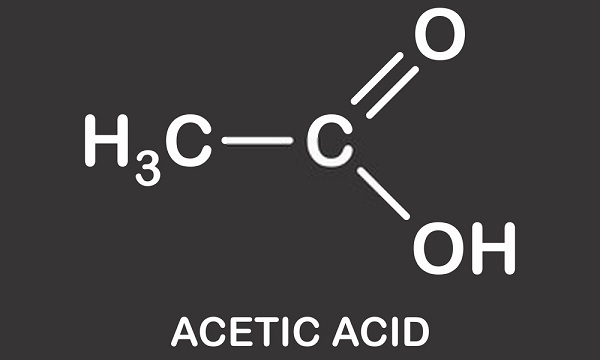Product Description
Acetic acid, also referred to as ethanoic acid, presents as a colorless liquid with a potent, pungent odor. It's a naturally occurring compound and a principal constituent of vinegar, typically a diluted solution of acetic acid in water. Vinegar finds widespread use in culinary practices, household chores, and various industrial applications. Here are some key details about acetic acid and vinegar:
Chemical Formula: The chemical formula for acetic acid is CH3COOH.
Source: Acetic acid is commonly produced through natural fermentation processes. In vinegar production, acetic acid bacteria convert ethanol (alcohol) into acetic acid.
Concentration in Vinegar: Vinegar generally contains around 4% to 8% acetic acid, though specialty vinegars might have higher concentrations.
Flavor and Culinary Use: Acetic acid imparts the distinctive sour taste to vinegar. It's a culinary staple, used for flavoring dishes, as a condiment, in salad dressings, marinades, and for pickling vegetables.
Preservation Properties: With antimicrobial traits, acetic acid is a valuable preservative. This property has historically rendered vinegar useful in food preservation.
Cleaning and Disinfecting: Due to its acidity, vinegar serves as a natural cleaning agent and disinfectant on various household surfaces.
Commodity
Glacial Acetic Acid
Standard
GB/T1628-2020
Items
Index
Result
Superior
First-grade
Qualified
Appearance
Transparent liquid without suspended solids and mechanical impurities
qualified
Chromaticity(in Hazen)
(Pt-Co) ≤10
20
30
10
Acetic acid content %
99.8
99.5
98.5
99.8
Moisture content %
0.15
0.20
——
0.09
Formic acid content %
0.05
0.10
0.30
0.03
Acetaldehyde content %
0.03
0.05
0.10
0.02
Evaporation residue %
0.01
0.02
0.03
0.006
Fe Content ≤ %
0.00004
0.0002
0.0004
0.00002
Permanganate-Reducing Substances ≥ min
30
5
>30
Conclusion:Up to the standard of GB/T1628-2008.(Superior Products)

